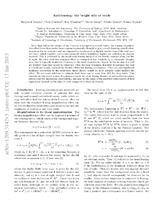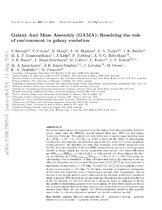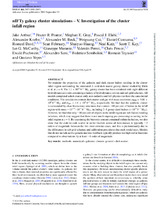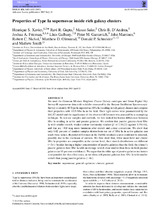Browsing Physics and Astronomy by Subject "Clusters"
Now showing items 1-4 of 4
-
Anti-lensing: the bright side of voids
(American Physical Society, 2013)More than half of the volume of our Universe is occupied by cosmic voids. The lensing magni ca- tion e ect from those under-dense regions is generally thought to give a small dimming contribution: objects on the far side ... -
Galaxy And Mass Assembly (GAMA): Resolving the role of environment in galaxy evolution
(Oxford University Press, 2013)We present observations of 18 galaxies from the Galaxy And Mass Assembly (GAMA) survey made with the SPIRAL optical integral field unit (IFU) on the Anglo- Australian Telescope. The galaxies are selected to ... -
nIFTy galaxy cluster simulations – V. Investigation of the cluster infall region
(Oxford University Press, 2016)We examine the properties of the galaxies and dark matter haloes residing in the cluster infall region surrounding the simulated cold dark matter galaxy cluster studied by Elahi et al. at z = 0. The 1.1 × 1015 h−1M ... -
Properties of Type Ia supernovae inside rich galaxy clusters
(Oxford University Press, 2013)We used the Gaussian Mixture Brightest Cluster Galaxy catalogue and Sloan Digital Sky Survey-II supernovae data with redshifts measured by the Baryon Oscillation Spectroscopic Survey to identify 48 Type Ia supernovae ...




